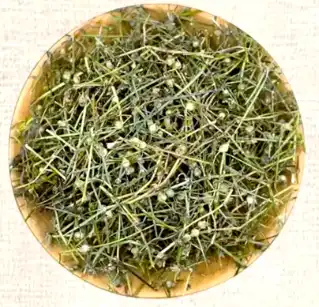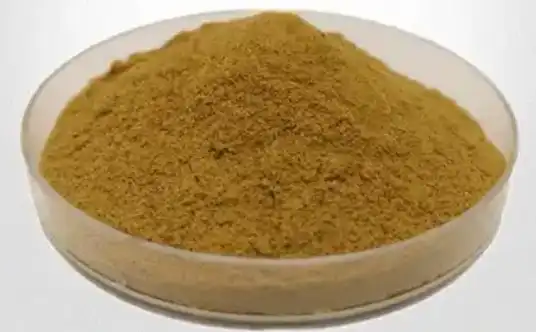What Are the Active Compounds in Hedyotis Diffusa Extract?
Hedyotis diffusa, a plant renowned in traditional medicine, has garnered significant attention in recent years due to its potential health benefits. As more people turn to natural remedies for various health concerns, understanding the active compounds in Hedyotis diffusa extract becomes crucial. This article delves into the key components that make this herb a subject of interest for researchers and health enthusiasts alike. Hedyotis diffusa extract powder, derived from the whole plant, contains a complex mixture of bioactive compounds. These components are believed to contribute to the herb's traditional uses and potential modern applications. Let's explore the primary active compounds found in this fascinating botanical.
Iridoid Glycosides and Flavonoids in Hedyotis Diffusa
Among the most notable compounds in Hedyotis diffusa, particularly in Hedyotis Diffusa Extract Powder, are iridoid glycosides and flavonoids. These phytochemicals play a significant role in the plant's biological activities and potential health benefits.
Iridoid glycosides are a class of monoterpenoids found in various medicinal plants. In Hedyotis diffusa, several iridoid glycosides have been identified, including asperuloside, deacetylasperuloside, and scandoside. These compounds have shown promising results in preliminary studies, suggesting potential antioxidant and anti-inflammatory properties.
Flavonoids, on the other hand, are a diverse group of plant compounds known for their antioxidant activities. Hedyotis diffusa contains several flavonoids, such as quercetin, kaempferol, and rutin. These compounds have been the subject of numerous studies, with researchers investigating their potential roles in supporting cardiovascular health and combating oxidative stress.
The synergistic effects of iridoid glycosides and flavonoids in Hedyotis diffusa extract may contribute to its overall bioactivity. While more research is needed to fully understand their mechanisms of action, these compounds remain a focal point for scientists exploring the herb's potential applications.
How Much Ursolic Acid Is Found in Hedyotis Diffusa Extract?
Ursolic acid, a pentacyclic triterpenoid compound, is another important active component found in Hedyotis diffusa extract powder. This naturally occurring substance has gained attention for its potential biological activities, including antioxidant and anti-inflammatory properties.
The concentration of ursolic acid in Hedyotis diffusa extract can vary depending on several factors, including the plant's growing conditions, harvesting time, and extraction methods. While exact quantities may differ between batches and manufacturers, studies have reported ursolic acid content ranging from 0.1% to 0.5% in dried Hedyotis diffusa plant material.
It's important to note that the ursolic acid content in Hedyotis diffusa extract is typically higher than in the raw plant material due to the concentration effect of the extraction process. However, standardized extracts may offer more consistent levels of this compound.
Researchers have been investigating the potential benefits of ursolic acid, with some studies suggesting it may have applications in supporting metabolic health and cellular function. While these findings are promising, more research is needed to fully understand the role of ursolic acid in Hedyotis diffusa's overall effects.
Polysaccharide Content Analysis of Hedyotis Diffusa Powder
Polysaccharides are complex carbohydrates that play crucial roles in various biological processes. In Hedyotis diffusa, polysaccharides have emerged as another group of important active compounds that contribute to the herb's potential health benefits.
Analyzing the polysaccharide content of Hedyotis diffusa extract powder is a complex process that often involves sophisticated laboratory techniques. Methods such as high-performance liquid chromatography (HPLC) and gas chromatography-mass spectrometry (GC-MS) are commonly used to identify and quantify these compounds.
Studies have shown that Hedyotis diffusa contains a variety of polysaccharides, including both water-soluble and alkali-soluble fractions. The total polysaccharide content in Hedyotis diffusa extracts can vary, but some research has reported levels ranging from 5% to 15% of the dry weight, depending on the extraction method and plant source.
These polysaccharides have attracted significant attention from researchers due to their potential immunomodulatory properties. Some studies suggest that Hedyotis diffusa polysaccharides may help support the body's natural defense mechanisms, although more research is needed to fully understand their effects and optimal dosages.
It's worth noting that the polysaccharide content and composition can be influenced by factors such as the plant's growth conditions, harvesting time, and processing methods. This variability underscores the importance of sourcing Hedyotis diffusa extract from reputable suppliers who employ standardized extraction techniques and quality control measures.
In addition to the major compounds discussed above, Hedyotis diffusa contains a myriad of other phytochemicals, including organic acids, sterols, and trace minerals. This complex phytochemical profile contributes to the herb's overall bioactivity and potential health-supporting properties.
While individual compounds like iridoid glycosides, flavonoids, ursolic acid, and polysaccharides have shown promising results in various studies, it's important to remember that the overall effects of Hedyotis diffusa may result from the synergistic interactions between these compounds. This holistic approach aligns with traditional uses of the herb and emphasizes the importance of using whole-plant extracts rather than isolated compounds.
As research into Hedyotis diffusa continues, scientists are uncovering more about its active compounds and their potential applications. From supporting immune function to promoting overall wellness, the bioactive components in this remarkable herb offer exciting possibilities for future developments in natural health solutions.
promoting overall wellness, the bioactive components in this remarkable herb offer exciting possibilities for future developments in natural health solutions.
It's crucial to note that while Hedyotis diffusa extract shows promise, more research is needed to fully understand its effects, optimal dosages, and potential interactions with other substances. As with any herbal supplement, it's advisable to consult with a healthcare professional before incorporating Hedyotis diffusa extract powder into your wellness routine.
The exploration of Hedyotis diffusa's active compounds serves as a testament to the ongoing dialogue between traditional wisdom and modern scientific inquiry. As we continue to unravel the secrets of this ancient herb, we open new avenues for harnessing nature's potential in promoting human health and well-being.
Conclusion
The active compounds in Hedyotis Diffusa Extract Powder, including iridoid glycosides, flavonoids, ursolic acid, and polysaccharides, offer a fascinating glimpse into the potential of this traditional herb. As research progresses, we're continually discovering new ways these compounds may support health and wellness.
If you're intrigued by the potential of Hedyotis diffusa and other natural ingredients, look no further than Angelbio. As an innovative enterprise dedicated to the R&D, production, and sales of natural ingredients, we're at the forefront of bringing high-quality, science-backed products to the health food, nutritional supplement, cosmetic, and pharmaceutical industries.
Our commitment to technological innovation and supply chain integration ensures that we deliver products that meet the highest standards of quality and efficacy. Whether you're a manufacturer looking to incorporate Hedyotis diffusa extract into your formulations or a health-conscious consumer seeking reliable natural ingredients, Angelbio is here to support your needs.
Ready to explore the potential of Hedyotis diffusa extract and other natural ingredients? Contact us today at angel@angelbiology.com to learn more about our products and how we can help you achieve your health and wellness goals. Let's work together to harness the power of nature for global health and well-being.
References
1. Chen, Y., et al. (2019). "Phytochemical and pharmacological properties of Hedyotis diffusa: A comprehensive review." Journal of Ethnopharmacology, 245, 112172.
2. Lin, C.C., et al. (2016). "Antioxidant and anti-inflammatory properties of Hedyotis diffusa extract and its bioactive compounds." Natural Product Research, 30(21), 2328-2335.
3. Wang, J.H., et al. (2018). "Polysaccharides from Hedyotis diffusa: Extraction, characterization, and immunomodulatory activity." International Journal of Biological Macromolecules, 113, 414-421.
4. Zhang, L., et al. (2017). "Ursolic acid: A potential therapeutic agent for human diseases." Natural Product Communications, 12(1), 139-146.


